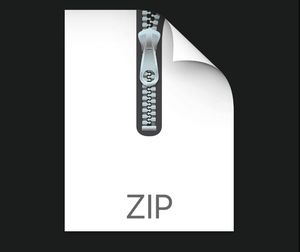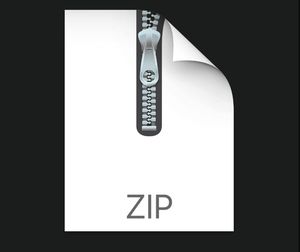$35
Mini Project 3 MMM Solved
# Design and Implementation of a Virtual Memory Unit (MMU)
This project consists of writing a program that translates logical to physical addresses for a virtual address space of
size 2<sup16</sup = 65,536 bytes. Your program will read from a file containing logical addresses and, using a TLB and a page
table, will translate each logical address to its corresponding physical address and output the value of the byte stored
at the translated physical address. Your learning goal is to use simulation to understand the steps involved in translating
logical to physical addresses. This will include resolving page faults using demand paging, managing a TLB, and
implementing a page-replacement algorithm.
### Details
Your program will read a file containing several 32-bit integer numbers that represent logical addresses. However,
you need only be concerned with 16- bit addresses, so you must mask the rightmost 16 bits of each logical address.
These 16 bits are divided into (1) an 8-bit page number and (2) an 8-bit page offset. Hence, the addresses are
structured as shown as:
<!--  --
<img src="./figs/address.png" alt="alt text" width="500"
Other specifics include the following:
* 2<sup8</sup entries in the page table
* Page size of 2<sup8</sup bytes
* 16 entries in the TLB
* Frame size of 2<sup8</sup bytes
* 256 frames
* Physical memory of 65,536 bytes (256 frames √ó 256-byte frame size)
Additionally, your program need only be concerned with reading logical
addresses and translating them to their corresponding physical addresses. You do not need to support writing to the
logical address space.
### Address Translation
Your program will translate logical to physical addresses using a TLB and page table as outlined in Section 9.3. First,
the page number is extracted from the logical address, and the TLB is consulted. In the case of a TLB hit, the frame
number is obtained from the TLB. In the case of a TLB miss, the page table must be consulted. In the latter case, either
the frame number is obtained from the page table, or a page fault occurs. A visual representation of the address-translation
process is:
<img src="./figs/vmm.png" alt="alt text" width="800"
### Handling Page Faults
Your program will implement demand paging as described in Section 10.2. The backing store is represented by the file
`BACKING STORE.bin`, a binary file of size 65,536 bytes located in `StartKit` directory. When a page fault occurs, you
will read in a 256-byte page from
the file BACKING STORE and store it in an available page frame in physical memory. For example, if a logical address with
page number 15 resulted in a page fault, your program would read in page 15 from BACKING STORE (remember that pages
begin at 0 and are 256 bytes in size) and store it in a page frame in physical memory. Once this frame is stored (and
the page table and TLB are updated), subsequent accesses to page 15 will be resolved by either the TLB or the page table.
You will need to treat BACKING STORE.bin as a random-access file so that
you can randomly seek to certain positions of the file for reading. We suggest using the standard C library functions
for performing I/O, including `fopen()`, `fread()`, `fseek()`,and `fclose()`. The size of physical memory is the same as the size
of the virtual address space, i.e., 65,536 bytes, so you do not need to be concerned about page replacements during a page fault. Later,
we describe a modification to this project using a smaller amount of physical memory; at that point, a page-replacement
strategy will be required.
### Test Files Located in StartKit
We provide the file `addresses.txt`, which contains integer values representing logical addresses ranging from 0 to 65535
(the size of the virtual address space). Your program will open this file, read each logical address and translate it to
its corresponding physical address, and output the value of the signed byte at the physical address.
### How to Begin
First, write a simple program that extracts the page number and offset based on:
<img src="./figs/address.png" alt="alt text" width="500"
from the following integer numbers:
```
1, 256, 32768, 32769, 128, 65534, 33153
```
Perhaps the easiest way to do this is by using the operators for bit-masking and bit-shifting. Once you can correctly
establish the page number and offset from an integer number, you are ready to begin. Initially, we suggest that you
bypass the TLB and use only a page table. You can integrate the TLB once your page table is working properly. Remember,
address translation can work without a TLB; the TLB just makes it faster. When you are ready to implement the TLB,
recall that it has only sixteen entries, so you will need to use a replacement strategy when you update a full TLB.
FIFO policy should be used for updating the TLB.
### Page Replacement
Thus far, this project has assumed that physical memory is the same size as the virtual address space.
In practice however, physical memory is typically much smaller than a virtual address space. This phase of the project now
assumes using a smaller physical address space with 128 page frames rather than 256. This change will require modifying
your program so that it keeps track of free page frames as well as implementing a page-replacement policy using
LRU (Section 10.4) to resolve page faults when there is no free memory.
### How to Run Your Program
You should edit the `test.sh` file to run your program. By doing so, your program will read in the file `addresses.txt`,
which contains 1,000 logical addresses ranging from 0 to 65535.
Your program is to translate each logical address to a physical address and determine the contents of the signed byte
stored at the correct physical address. (Recall that in the C language, the char data type occupies a byte of storage,
so we suggest using char values.)
Your program is to output a comma-separated values (CSV) file called `output.csv` that has
three columns:
* Column 1: the logical address being translated (the integer value being read from `addresses.txt`).
* Column 2: the corresponding physical address (what your program translates the logical address to).
* Column 3: the signed byte value (i.e., the binary value) stored in physical memory at the translated physical address.
We also provide the file `correct.txt`, which contains the correct physical address
values for the file `addresses.txt`. You should use this file to determine if your program is correctly translating
logical to physical addresses.
### Statistics
After completion, your program is to report the following statistics in the standard output (i.e., stdout) as well:
1. Page-fault rate: the percentage of address references that resulted in page faults.
2. TLB hit rate: the percentage of address references that were resolved in the TLB.
Since the logical addresses in `addresses.txt` were generated randomly and do not reflect any memory access locality,
do not expect to have a high TLB hit rate.
### Deliverables
Submit a zip file containing all files that are required to build and run the project.
This includes the `StartKit`, even if you didn't change anything, the `C` source codes, and your `test.sh` file.
Please do not submit object files (*.o) or compiled executables.



